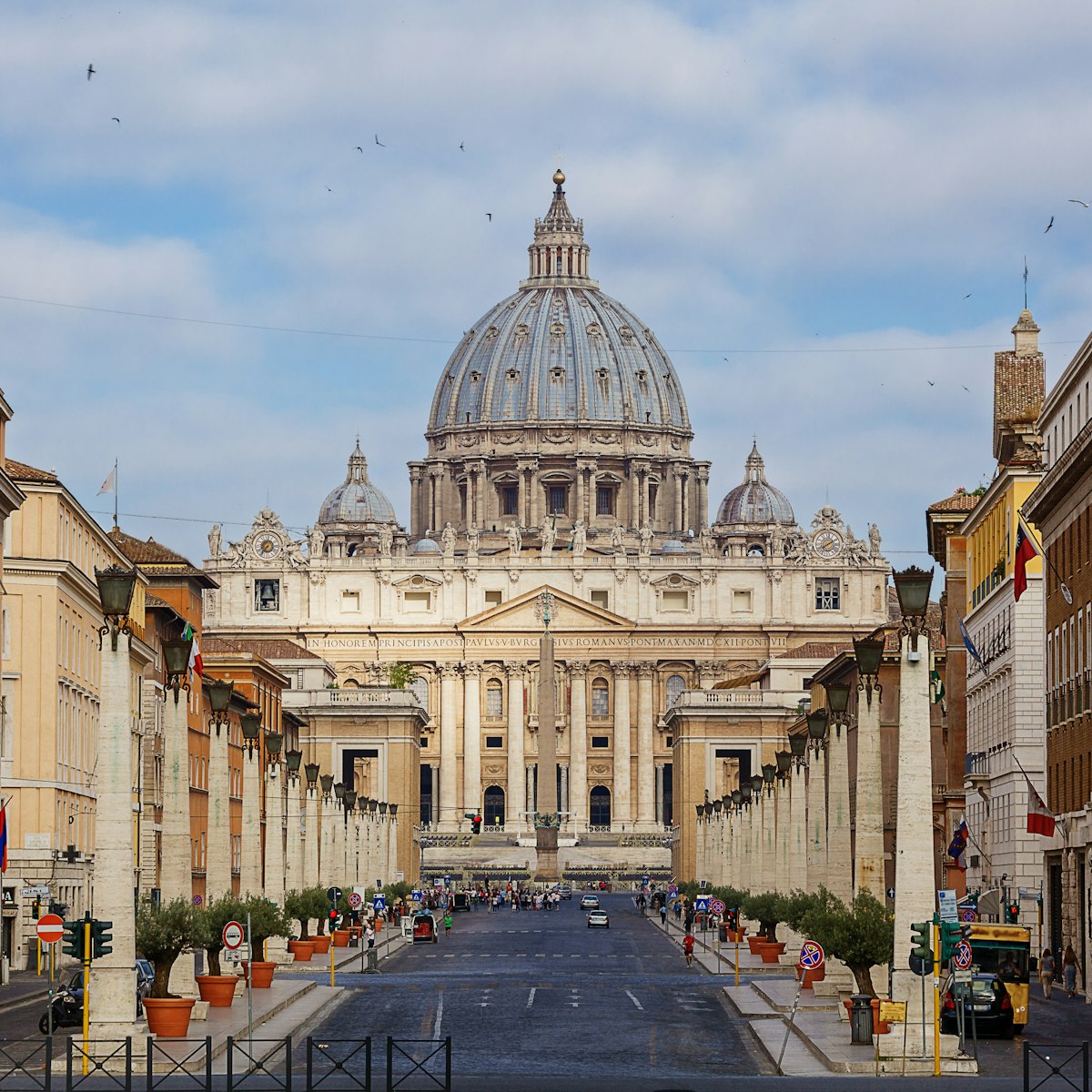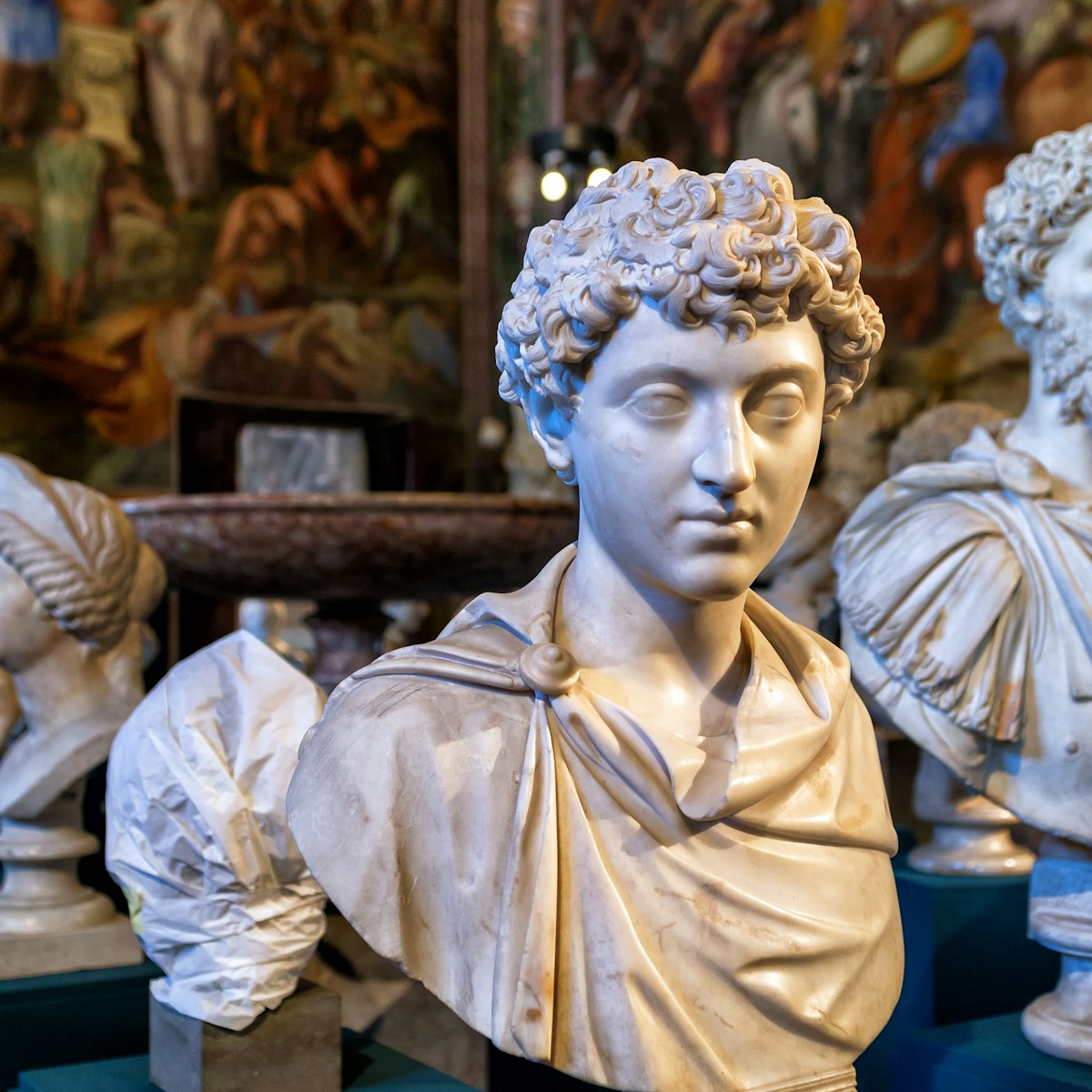Designed by Carlo Maderno, this modest church is an unlikely setting for an extraordinary work of art – Bernini’s extravagant and sexually charged Santa Teresa trafitta dall’amore di Dio (Ecstasy of St Teresa). This daring sculpture depicts Teresa, engulfed in the folds of a flowing cloak, floating in ecstasy on a cloud while a teasing angel pierces her repeatedly with a golden arrow. It's in the fourth chapel on the north side.
Watching the whole scene from two side balconies are a number of sculpted figures, including one depicting Cardinal Federico Cornaro, for whom the chapel was built. It’s a stunning and major work, bathed in soft natural light filtering through a concealed window. Go in the afternoon for the best effect.
History
The Baroque church of Santa Maria della Vittoria was built between 1608 and 1620 and originally dedicated to St Paul. An initial victory of the Catholics over Protestants during the Thirty Years’ War’s Battle of White Mountain (1620) led to the celebratory renaming of the structure.
Giovanni Battista Soria added the marble facade in 1626, and over time different artists – including Domenichino, Guercino, and Guido Reni – contributed to adorning the interior. In the 1640s, Gian Lorenzo Bernini completed what is considered the church’s showpiece, the Ecstasy of Saint Teresa. The intricate sculptural group was crafted for the chapel of Venetian cardinal Federico Cornèr and was carefully positioned below an invisible window that allows for the sun rays to descend upon the two figures – an angel about to pierce St Teresa’s heart with an arrow – creating a dramatic effect through the contrast of light and shadows.
Tips and other practicalities
The church is open for visitors from Monday to Saturday between 9am and noon, and 3:30pm to 6pm. On Sundays it is possible to visit only between 3:30pm and 6pm. It is located at the intersection of Via XX Settembre and Largo di Santa Susanna, around the corner from the Fontana dell'Acqua Felice.








